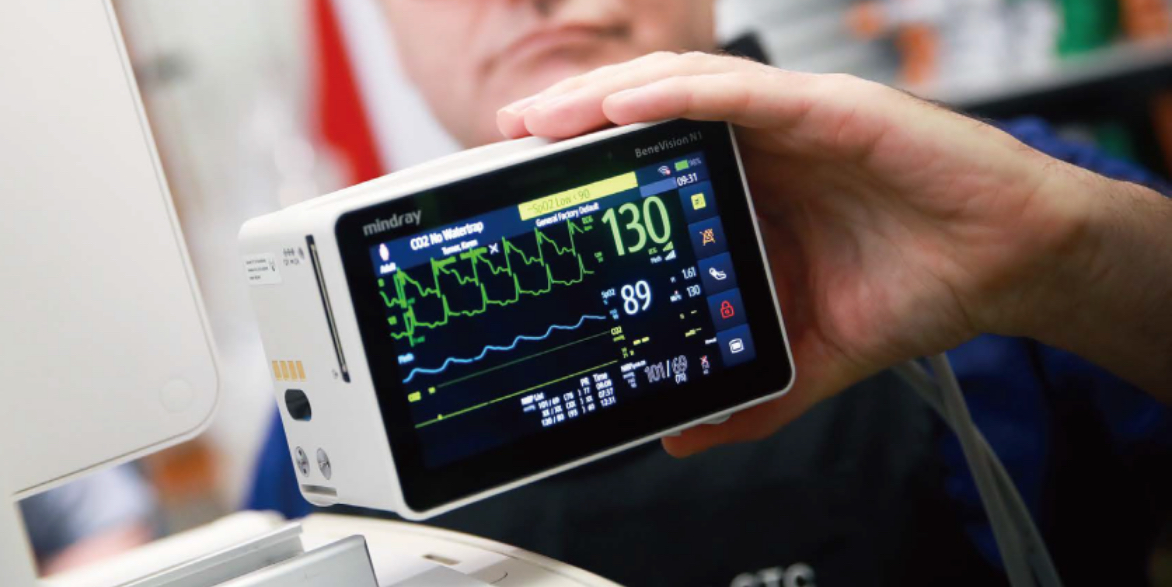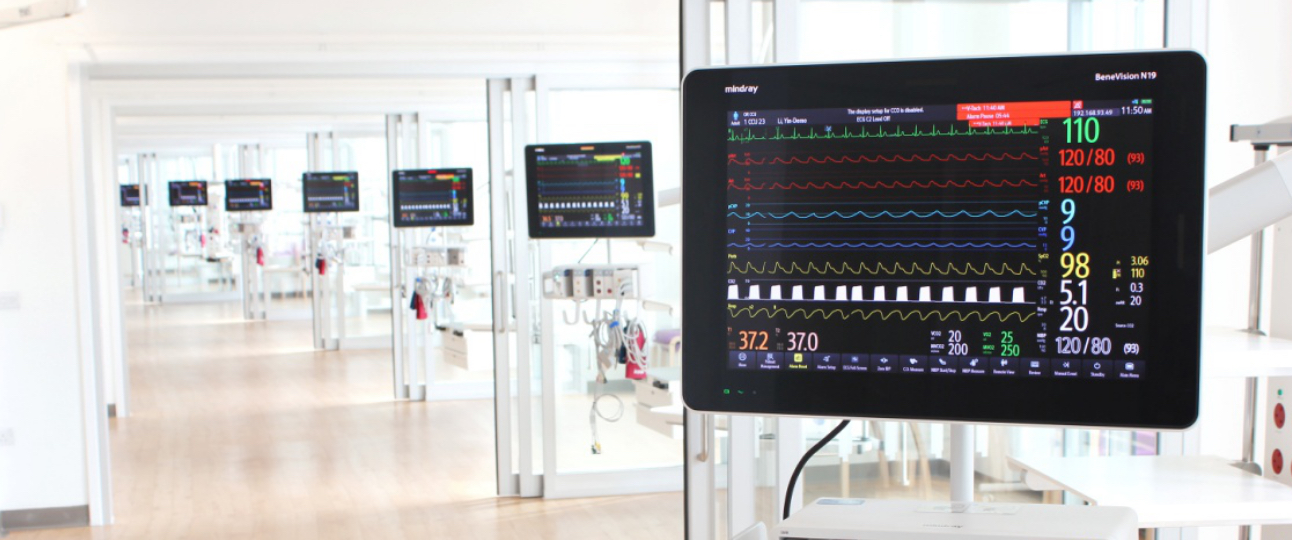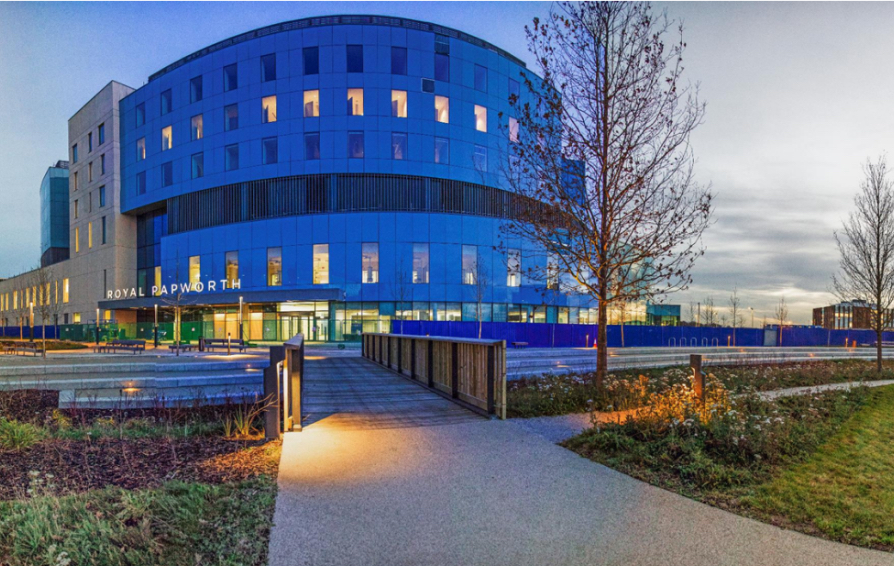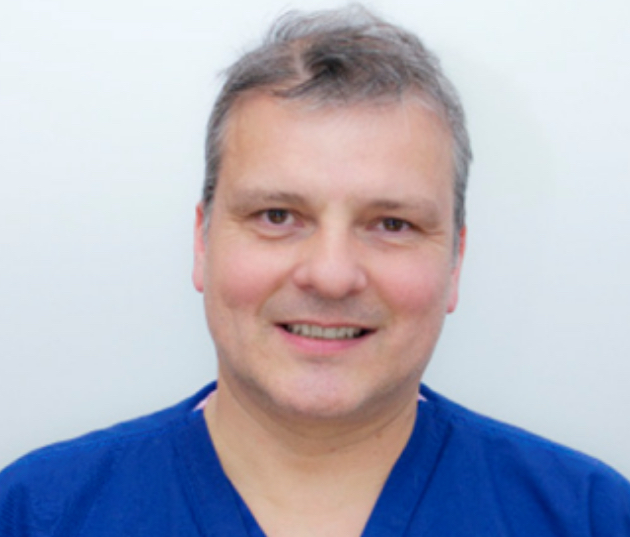Royal Papworth : Keeping its finger on the pulse with connected monitoring
Royal Papworth Hospital, UK's largest specialist cardiothoracic hospital, has recently relocated its services to a new state-of-the-art building at Cambridge Biomedical Campus. The new hospital was officially opened by the Queen Elizabeth II on July 9. Designed with patients in mind, the new hospital building has been modelled on the shape of a human heart – providing optimum ‘flow’ throughout the hospital for both patients and staff.
As a member of Cambridge University Health Partners, Royal Papworth treats more than 10,000 patients each year from across the UK. It is known for making a series of clinical breakthroughs including UK’s first successful heart transplant in 1979, and the world’s first triple transplant of the heart, lungs and liver in 1986.
The hospital was bestowed the Royal status in 2017 in recognition of its excellence in healthcare, research and clinical education, making it the first hospital in the East of England to have such an accolade.
Challenges of the new “heart”
The new Royal Papworth Hospital provides most patients with single, en-suit rooms to improve patient privacy, dignity and infection control. However, managing patients in this state-of-the-art new facility requires an innovative patient monitoring solution to provide the highest levels of visibility and ensure patient safety at all times.
- Continuous patient monitoring is required in the rooms and throughout patient transfers.
- The National Early Warning Score 2 (NEWS2) protocol needs to be adapted for the hospital’s unique cohort of patients.
- The pioneering theatre team needed a monitor that could become ‘the data hub’ which integrates a variety of devices and offering clear visualization of multiple data sources.
- Mindray UK has worked collaboratively with the prestigious hospital to develop a bespoke solution that could ensure close monitoring of patients across the ICU, operating theatres and day wards.
Continuous monitoring, leaving no gap throughout patient journey
In this busy hospital that treated nearly 25,000 inpatients last year, efficiency is very important. “On average, we transfer 11 patients per day from the ICU back to the ward and each of these transfers takes a minimum of half an hour,” says Papworth’s Chief Nursing Information Officer, Eamonn Gorman. “If you can achieve small time savings for each of these transfers, by not having to connect and reconnect the monitoring, these efficiency savings can quickly add up.”
A significant benefit of the Mindray system is the compact BeneVision N1monitor – a versatile bedside monitor, a multi-parameter module and a powerful transport monitor – all in one. The BeneVision N1 can be simply unplugged from a bedside monitor, following patient throughout their care journey as a transport monitor, and then plugged back into the host monitor at the new location. This means there are no cumbersome leads to disconnect and reconnect, or clean between patients, and the patient is continuously monitored, thus ensuring seamless data and patient safety at all times.

“From a nursing perspective, transporting patients is no longer a headache and there is no interruption in the patient data. This helps to reduce anxiety for the nursing staff – having robust patient monitoring is the backbone of safe patient transfer.”
Cheryl Riotto
Head Nurse
Royal Papworth Hospital
Bespoken NEWS2: meeting national standards with Mindray
NEWS2, the latest version of the National Early Warning Score (NEWS), is a new national requirement for the NHS in UK. The protocol aims to save lives by standardizing the assessment and response to patient deterioration. While many hospitals calculate this early warning score on paper, Royal Papworth has been able to automate the process - using the BeneVision monitors– to eliminate human errors and speed up detection of patient deterioration.
However, as a specialist heart and lung hospital, Papworth’s cohort of patients has a very different physiology from general patients. Mindray was able to refine the NEWS2 display, without altering the score, to enable Papworth’s clinical teams to additional parameters that are essentially crucial, such as Emesis (sickness), pain score and inspired oxygen.
Additionally, Mindray system integrating with a third-party’s mobile alarming devices allows the hospital staff to be alerted and respond to patient deterioration quickly, offering a ‘safety net’ for nurse caring for patients. For patients who have a chronically high NEWS2 score, some bespoke adjustments of the system have also been provided to make sure the alarm triggered appropriately.
A “Data Hub” with unparalleled visibility and interoperability
Mindray’s solution has also been installed in the most critical areas of the hospital, including the theatres – where the complexity of surgery demands the highest levels of patient monitoring. The visual presentation of vital information on screen was tailored made for easy viewing to support complex cardio thoracic surgery.
Importantly, Mindray monitors are interfaced with multiple information systems at Royal Papworth including the Electronic Patient Record (EPR), clinical information system for ICU and e-observation and alerting system, so that patient data are instantly accessible at any point of care.
The interoperability is also enabled by Mindray BeneLink Interfacing Module, which can integrate the monitor with multiple devices, such as ventilators, anaesthesia machines, balloon pumps, defibrillators and ECG machines. A variety of critical data can be displayed on a single monitor screen simultaneously for rapid insight into the patient’s status. Equipment in the challenging theatre environment thus can be streamlined at Royal Papworth.
By becoming a “data hub”, Mindray BeneVision patient monitoring solution provides unparalleled patient visibility and interoperability, helping the hospital inform clinical decisions, enhance clinical efficiency and ultimately improve patient outcomes.
Future-proofing monitoring

Mindray, driven by the vision of “Better healthcare for all” , has been constantly exploring new technologies to be well-positioned for the current and future challenges. This close collaboration with clinical partners at Papworth will ensure the technology remains cutting-edge and evolves with the changing demands of the hospital. “We are just at the start of our journey with Mindray,” Papworth’s Electro-medical Services Manager, Paul Robbins says.
“Papworth provides leading-edge innovation in its field and we wanted to use technology that reflected this, with the ability to move and evolve as we move and evolve. Mindray’s solution offered the greatest scope to achieve this.”
Paul Robbins
Electro-medical
Services Manager, Royal Papworth Hospital


